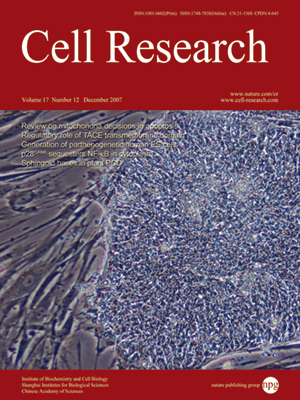
Volume 17, No 12, Dec 2007
ISSN: 1001-0602
EISSN: 1748-7838 2018
impact factor 17.848*
(Clarivate Analytics, 2019)
Volume 17 Issue 12, December 2007: 976-984
REVIEWS
Apoptosis commitment — translating survival signals into decisions on mitochondria
James A Keeble1 and Andrew P Gilmore1
1Wellcome Trust Centre for Cell-Matrix Research, Faculty of Life Sciences, University of Manchester, A.3034 Michael Smith Building, Oxford Road, Manchester M13 9PT, UK
Correspondence: Andrew P Gilmore(agilmore@manchester.ac.uk)
Most defective and unwanted cells die by apoptosis, an exquisitely controlled genetic programme for removing such cells without damaging the surrounding tissue. Once a cell has committed to apoptosis, the process is remarkably efficient, and is completed within a few minutes of initiation. This point of no return for an apoptotic cell is commonly held to be the point at which the outer mitochondrial membrane is permeabilised, a process regulated by the Bcl-2 family of proteins. How these proteins regulate this decision point is central to diseases such as cancer where apoptotic control is lost. In this review, we will discuss apoptotic signalling and how a cell makes the irreversible decision to die. We will focus on one set of survival signals, those derived by cell adhesion to the extracellular matrix (ECM), and use these to highlight the complexities of apoptotic signalling. In particular, we will illustrate how multiple signalling pathways converge to determine critical cell fate decisions.
Cell Research (2007) 17: 976-984. doi: 10.1038/cr.2007.101; published online 11 December 2007
FULL TEXT | PDF
Browse 1768


